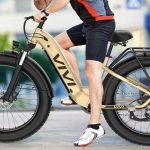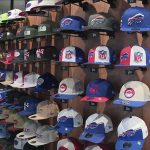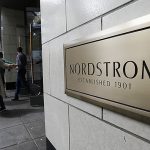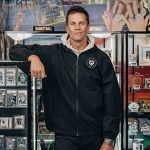By Lou Dzierzak
Ten years ago, the paddlesports industry went through a period of intense consolidation. Small iconic brands found legitimate reasons to sell to holding companies promoting the advantages of economies of scale. Today, Johnson Outdoors manages Necky Kayaks, Ocean Kayak, Old Town Canoe & Kayak, Lendal, Carlisle and Extrasport. Confluence Watersports operates Wilderness Experience, Dagger, Perception, Wave Sport, Adventure Technology, Mad River Canoe, Harmony and Mainstream.
The jury is still out on whether consolidation has helped or hurt the overall industry. John Durrua, owner of Jersey Paddling in Brick, NJ, comments, “From a retailers standpoint, I dont think its been a good thing for the industry.” He recalls a time when canoe and kayak companies crisscrossed the country promoting paddlesports. “Its become big corporations thinking the industry is larger than it really is and running it as numbers on a spreadsheet. I dont see the passion I used to. Its become who can sell the most plastic for the least amount of money.”
Joe Pulliam, who founded Dagger Kayaks in 1988 and later sold his company to Watermark [purchased by Confluence Watersports in 2003], sees two distinct paths in the consolidation frenzy.
“One [path] is consolidation like we see with Wenonah [Canoe] purchasing Current Designs [Kayaks], or Andy Zimmerman forming Legacy [Paddlesports] and bringing Heritage and Liquidlogic [brands under that umbrella, and starting a new brand with Native [Watercraft],” says Pulliam. “That is different than what we have with Confluence and Johnson Outdoors and all their brands. Outside corporate ownership is a different beast than smaller companies being put together, owned, and run by people with a background and passion in this industry.”
Pulliam continues, “If we look at what has happened since then, the Current Designs purchase by Wenonah has probably been good for both companies. Time will tell how well the Legacy model works, but it seems to me, they are off to a pretty good start. How have Ocean Kayak, Necky Kayaks, Lendal Paddles and Carlisle paddles done under the Johnson umbrella? I dont think its a very profitable part of their business. The Confluence model has struggled. Its just really tough having all these brands under one set of management. Im yet to be convinced that there are such great efficiencies to be gained. What Ive seen too many times under corporate ownership is all the focus being on profit. Maybe that is the classic business model, but Im not so sure thats worked very well in the paddlesports world.”
Mike Chicanowski, owner of Wenonah Canoe and Current Design Kayaks in Winona, MN, reflects, “We lived through that consolidation process. We were approached by everybody. I never really seriously considered it. I didnt want to be swallowed up with a bunch of other groups. I thought I would be happier and more successful by myself. In retrospect, I think that was a good idea.”
During that era, proponents of consolidation confidently promoted two major benefits. First, outdoor specialty retailers would gain from the ability to buy a range of products from one company. Economies of scale would offer more competitive pricing, streamlined order administration, and reduced shipping costs.
The second benefit was that the marketing power of the combined brands would allow the industry to invest in consumer outreach to increase interest and participation.
The results have been mixed. As corporations have struggled to live up to that promise, new brands have been introduced and have prospered.
“Overall, I dont know that the product is any better,” says Pulliam. “I dont think the service specialty retailers are getting from the rolled-up companies is as good as the independent brands. I just havent seen where the roll-up business model is creating any real business advantage in our marketplace.”
Durrua is not so keen on his experience with one-stop shopping.
“Thats a great theory but they cant do it. Ive been to all the factories, and its fairly impressive to see all these molding units in one spot. But they cant deliver. The whole idea is great, but its not translating. The purchase order is supposed to match the packing list, and that doesnt happen,” says Durrua. “So what does it matter if I order product and they dont deliver what I order?”
Those challenges have opened opportunities for brands such as Jackson Kayaks, Legacy Paddlesports and Hurricane Aquasports to thrive. Eric Jackson founded his company in 2003. He recalls, “We launched Jackson Kayak with a kayak for 30- to 80-pound kids at a time when there was no such thing as 30- to 80-pound kids that kayaked. This marked the beginning of a tradition. We lead the market, not follow it.”
Jacksons business philosophy is personal and direct. He explains, “We dont sell to dealers, we sell to customers. We have no sales reps trying to sell in. My line to the dealers is, I am going to sell X number of kayaks in your market. Want to get on board? We simply offer a better product, in a size for you, with better materials, from a family owned company, with better back-end customer service, better front-end service, and do it at a reasonable price. We are kayakers. The kayakers can smell out the other companies marketing that claims to be kayakers for kayakers, but are really just suits for money.”
Andy Zimmerman and John Sheppard formed Wilderness Systems in 1986. In 1998, Wilderness Systems merged with Mad River Canoe, and Confluence Holdings was formed. Zimmerman left Confluence in 2001. Four years later, Zimmermans non-compete agreement with Confluence expired and he launched Legacy Paddlesports. Currently distributed through more than 400 specialty stores, sales are booming.
“There is still the issue of the infancy of our company. Were seeing incredible growth because we are still the new kid on the block. I also think were seeing growth because we have some new and innovative products,” offers Zimmerman. “We are paddlers. We are passionate about the sport. We are also passionate about profits. But our decisions are not made primarily on profitability. We have a long-term vision. We dont want to be the biggest. We want to be the best.”
Brad Taylor, kayak director at Hurricane, says, “The conglomerates have made it tough for their core dealers to survive because they have opened up to every box store that there is. Their core dealers are having a very tough time competing at that level.”
Chicanowski ponders, “I dont know why dealers buy so much from the big conglomerates. You can buy those boats in every big box in the country. I think they think they need the [brand] names, and they need a cheap boat in their store. If someone walks into a specialty store, they have pre-qualified themselves to buy a nicer boat. If you end up selling them a nine-foot cheap boat, you have lost a better sale. It comes down to salesmanship.”
The concept of one-stop shopping is valid but, as in all business endeavors, the devil is in the details. “For the specialty retailer to compete against a big box, there are economies of scale and discount levels through that kind of purchasing. Its a tough market for a smaller retailer store and being able to bunch those together can be an advantage,” explains Zimmerman. “They [conglomerates] cant deliver right now. When people put all their eggs in that basket and have a short selling season and rely on that to be profitable or not, if that goes bad, they are in a lot of trouble. You have to get it right.”
Expanding the marketplace was the second anticipated benefit of consolidation. While sales of kayaks have increased in recent years, specialty retailers arent seeing the creation of long-term paddlers.
“The big conglomerates are diminishing their profitability by putting so much of their energy and manufacturing capacity into $399 boats that have extremely low margins,” suggests Taylor.
From a marketing perspective, lower-priced boats should draw more people into the sport. If new paddlers enjoy the experience, they will, over time, upgrade their boats and accessories and become life-long customers. According to experts, thats not happening.
Durrua explains, “People want to get into paddling, so they buy a nine-foot boat and paddle around and say, paddling sucks. What weve heard in the industry is, How do you get people to become enthusiasts? How do we get more people involved in the sport of paddling? My answer is always, Stop selling nine-foot boats.”
Chicanowski adds, “In most cases, [inexpensive boats] turn people off. The biggest problem with those boats is that a lot of those people would be willing to get up-sold to a better boat, and would be better served. Thats the true travesty of the huge proliferation of these cheap boats. Its a missed opportunity. I dont understand the business model of selling boats for $295 with a paddle and a set of foam blocks. You need to make a reasonable, fair profit and $10 boats isnt it.”
The expected investment in consumer outreach hasnt materialized, either. Acording to Pulliam, “Despite all the growth weve had, the total amount of money spent on marketing support for grassroots events or advertising is way down.” In his mind, the recent increase in recreational boats isnt motivating people to move deeper into paddlesports. “The preponderance of evidence is that it is not happening. I think its a different mindset. People who want to go out, [mess] around, and have fun with a new toy are a lot different than ones who want to go out and cross an ocean or paddle down a tough stream.”
DOWNSTREAM
The romantic vision of a small, entrepreneurial brand taking on a corporate giant is an idea that many can celebrate. But success in such a competitive environment is tough.
After 40 years in the paddling business, Chicanowski realizes that, “To be successful, you have to enjoy it; you have to want to do it. It has to be your absolute passion. The money is not the issue. This is what I do. If it wasnt something I didnt enjoy doing, I would move on.”
Taylor offers, “Were just over 10 years old. It was a bit of a battle at first, but retailers are very receptive. Weve emerged from being a second-tier brand to become some important paddlesports dealers number one vendor. Thats been a great change.”
Pulliam reflects on the prospects for success at companies both large and small. “You asked the question, Can the independent brands compete and survive and prosper in this marketplace? To me, the real question is, Can the corporately owned roll-up brands compete and survive in this marketplace? I think that is still to be determined. I dont think there is any doubt that a well-run, well-marketed, independent company that focuses on creating a brand can prosper in this market.”
A culture that reflects an intense love of the sport is critical. While some version of that culture exists in paddlesports companies of all sizes, the philosophies can be drastically different.
Kelley Woolsey has experienced the business side of paddlesports from both perspectives, first as SVP sales and marketing for Confluence and, since June 2008, as director of sales and marketing for Pelican International. From his view, “You have to work a lot harder at doing it and empower people to protect that culture. For some big companies, that was never the point. They buy things as an investment and expect performance and profit.”
Woolsey believes smaller brands have an edge in that area. “They are still enthusiasts and they understand the industry, the sport and the category. The little, new companies bring creativity and freshness. They are not afraid to do something different. Bigger companies get comfortable with what they are doing and continue to do the same. Its important that we have an influx of new and smaller companies, and that retailers support them, because those little guys will keep the big guys honest and on their game.”
Zimmerman adds, “Part of our success is due to the soul that we have and will always maintain. Soul is critical to our success and extends out to the person who answers the phone at Legacy Paddlesports. Theres always a voice to greet our customers.”
Durrua sees the difference in approachs first hand.
“People like Zimmerman have figured it out,” Durrua says. “He knew what grew his business in the first place. Thats service. Ive watched the entrepreneurs in their booths selling boats and telling their story to each person. A marketing guy from another brand is out walking the floor. That tells me something. That comes from a numbers background.”
Taylor believes consumers expect small companies to be the leaders in innovation and technology. “If you look at whats been going on over the last couple of years, thats where it has come from,” he says.
According to Woolsey, “Any company can tell a brand story, but its about the people who make up the company and their business philosophy. Sometimes, we get so caught up with the financial and administrative side of things that we forget what we are doing. Were making boats for people to go have fun.”
Zimmerman concludes, “There will always be the entrepreneur that will step into the game, that thinks they can grab their share of the market and make a difference in the sport. A little passion can go a long way. Add great product and great customer service, and you have a recipe for success.”










